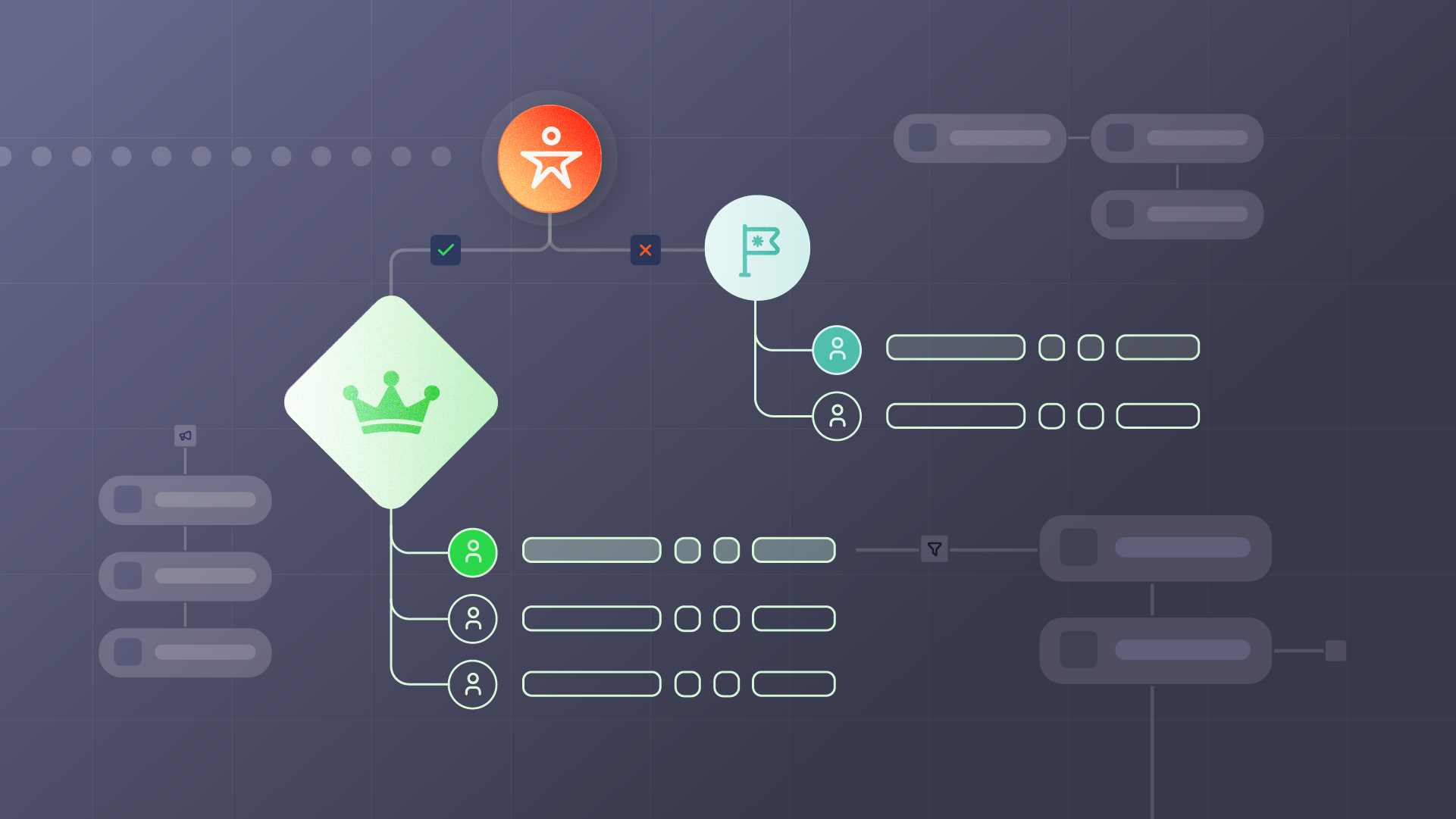Customer 360. Where do you start?
A complete, unified view of your customer at every touchpoint starts with a deep understanding of your customers, and is made possible by aligning your entire organization on clean, connected data.
No surprises here.
Yet you probably wince a little every time you hear the words “360 customer view,” thinking:
- Too complicated
- Too costly
- Too hard
We get it. Data transformation feels hard and even harder for a B2B enterprise-sized business.
You might not be able to tackle everything in a day’s work, but you need to start somewhere. A data project that holds the power to supercharge your revenue potential just can’t wait.
You’ll fall behind if you don’t start taking even the smallest steps toward exceeding your customers’ expectations. Gartner points out that “80% of B2B Sales interactions between suppliers and buyers will occur in digital channels by 2025”. Digital transformation is shaping the customer experience and you need to act now.
All in, happy customers translate to more sales and accelerated revenue. That means those two little words we hear so often,“Customer 360”, equate to big potential dollar signs.
A customer-centric strategy is no longer a nice-to-have, it’s a cornerstone for B2B enterprise selling. Your go-to-market success depends on it, and it all starts with your data. – David Nelson, Managing Director, Traction Complete
So where do you start?
What You Need To Know: Overcoming the Challenges to Achieving a Customer 360 View for B2B Selling

As an enterprise business, go-to-market teams and data leaders need to flip the traditional business model paradigm and put the customer first.
Effective companies start from the customer experience that they’re trying to engineer, think about the interactions and touchpoints that should be in place for the customer, and then develop procedures and systems around that. – David Jenkins, VP Data-Driven Marketing
B2B businesses need to think like a B2C business:
- Heavy hitters like Amazon were among the first to pave the way to personalization
- Digital transformation propels an always-on expectation level for every business
- B2B businesses are first-and-foremost real human people, with high expectations
- A single bad review now has the power to impact your business forever
All in, customers expect an omnichannel, personalized experience from any company they do business with, whether it’s a B2C or B2B company.
The challenge of meeting customer expectations is magnified for the modern B2B business.
The B2B customer journey doesn’t follow a linear process. It often involves multiple touchpoints, large buying committees, different departments, and even partners. Multiply this by revenue teams that work out of different systems with disconnected data and it starts feeling like an impossible data environment to keep up with.
It’s complex, and hardly a unified 360 degree customer view across your teams. Now more than ever, your organization needs a complete customer view.
But how?
Overturn complex, legacy systems and disconnected, dirty data.
Working backwards, and flipping your process-oriented organization on its head is far from simple when you have go-to-market teams with unique legacy systems in place.
What’s underpinning these set-in-stone processes? You’ve got:
- Siloed GTM teams including Sales, Marketing and Customer Success
- Data living outside of Salesforce, such as third party systems used by wider departments such as Finance and Operations
- Fragmented information that hinders a true 360 customer view
In other words…
Disconnected data holds you back.
In fact, disconnected data can cost companies upwards of 15 million dollars a year. Yet at the enterprise-level of business, you can’t just stop what you’re doing and revamp your entire data environment.
Do you:
- Do nothing? Go ahead, let that data pile up.
- Put in the blood, sweat, and spreadsheets? Hello, time and effort.
- Hire multiple people or a new team? Extra costs for a bandaid solution.
- Drop hundreds of thousands or millions of dollars on a data rehaul? Effective, but likely a clean sweep of your bank account.
Choose 1 to 3, and your team could be dealing with the friction of poor customer experiences as a result. This doesn’t help anyone, and certainly doesn’t build trust with your customers.
Picture this.
Michael, a sales rep, gives Berkshire Hathaway a discount. On a different day, Alice, another sales rep, engages with GEICO, not knowing that GEICO is a subsidiary of Berkshire Hathaway—and the customer data in Salesforce doesn’t give either of them any indication either. The discount that Michael gave comes to light, leaving the GEICO customer wondering why they didn’t get a discount as well. This results in customer’s trust and expectations dropping dramatically.
Choose D? Hey, you made the jump and skipped all the steps, but at a serious cost.
Whatever step you choose to take, none of the above is frustration-free.
The good news? It doesn’t have to be this hard.
Let’s break it down.
Crawl, Walk, & Run Your Way To A Unified 360 Customer View

If you’re climbing Mount Everest, you first prepare your team at Basecamp, right? The same goes for reaching your peak selling potential in Salesforce.
Tackle this data challenge with a walk, crawl, and run approach, including:
- Enabling your sales team to sell smarter in Sales Cloud with 360 view of customer data
- Aligning your entire GTM team with clean, connected data
- Bringing your entire organization into the fold, including third-party systems
Let the crawl begin.
Crawl – Enable Your Sales Teams To Sell More With 360 Sales Visibility
The first step starts with your sales team. They need connected data and a clean, 360 customer view to effectively sell.
81% of sales reps believe it is important to have a connected view of data across the entire customer journey – Source
Clean your Sales Cloud data, uncover 360 visibility, and enable your sales teams to sell smarter.
Windstream, an enterprise telecom company, kicked off their “crawl-first” strategy when they realized they were fighting an uphill battle:
- Recent mergers and acquisitions muddying the data water
- Complex customer vertices & locations
- Messy, duplicate records: 4 million and counting
- Lack of team alignment made it difficult to effectively sell
- Legacy systems that held them back
We were at our wit’s end, trying to navigate a really complex data environment. – Scott Ellsworth, VP Sales Ops, Windstream Enterprise
The problem was becoming unavoidable. So what did they do?
Windstream started by automatically linking all related records together in Salesforce by:
- Leveraging the best-in-class data provider Dun & Bradstreet to provide parent-child linkage info for Windstream’s accounts, providing the foundation for the 360 degree customer view
- Automatically building and visualizing complex account data into connected hierarchies with Complete Hierarchies
- Uncover a clear understanding of company structures, and who is part of the same family tree
- Identifying duplicate records and cleaning up the data chaos
Windstream went from 4 million records in Salesforce down to 5 hundred thousand. Scott said it created a more cohesive environment for his 400 sales reps to operate in.
“It’s imperative we have clean swim lanes for our sales reps to know where to focus.” said Scott, a point all RevOps and Sales leaders can agree on.
With clean, connected account data, a 360 customer view enables sales to sell more.
Sure, sales are being made, but it’s the ones that aren’t that are the red flags here:
- What cross-sell and up-sell opportunities might exist?
- Which reps had a relationship with which customers?
- What parent or subsidiary accounts are related?
It’s important to see all of these opportunities in one place because sales reps need a quick, clear picture that they can leverage.
To see this play out, let’s imagine you’ve got the following companies in your sales pipeline:
- Lucasfilm
- Marvel Entertainment
- Pixar
Nice. But what do all of these companies have in common? And no, it’s not entertainment.
They’re all owned by the Walt Disney Company.
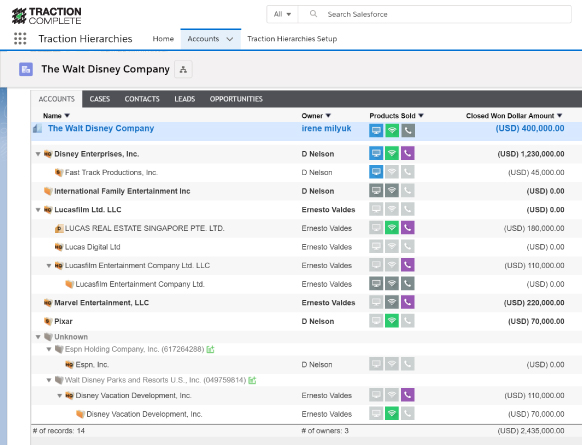
But your reps don’t have this visibility and don’t necessarily know that all these companies are owned by Disney, as each subsidiary company isn’t associated with each other. There would be no understanding that this was one company with an enterprise-level deal.
We all know the symptoms that disconnected account data like this produces.
Sales Ops struggles to carve out territories and align account ownership. This results in reps stepping on each other’s toes, fighting over accounts, and ultimately providing a poor customer experience.
When you have connected account hierarchies, you can overlay account ownership fields across the hierarchy to spot and quash rep conflicts before they come up.

Otherwise, a poor customer experience means lost sales potential and a lot of wasted time.
The bottom line? Crawl first and give your Sales team a 360 degree customer view.
Here’s a summary of the steps to take:
- Enrich your accounts with parent-child linkage data
- Automate your account hierarchies to uncover a complete 360 view of the customer
- Identify duplicates and clean up your account data
- Enable your sales teams to sell more effectively with cross-sell, up-sell, and whitespace
Not there yet? You can be up and running with the crawl in only a couple of weeks. Reach out to learn more.
Already up to speed? It’s time to start walking.
Walk – Unite Your GTM team with Clean, Connected Data
Whether it’s a sales rep, marketing manager, or customer service manager, all contributors on your go-to-market team should be on the same page when it comes to your customer.
76% of customers expect consistent interactions across departments. But 54% feel Sales, Service & Marketing don’t share information.
– Salesforce
You need to align the wider go-to-market team to sharpen your B2B revenue strategy.
Both Marketing and Customer Success have different goals and customer interactions, with a different view of the customer. Marketing owns leads. Customer Success has a view of all the current and historical cases on an account.
68% of sales professionals say it is absolutely critical or very important to have a single view of the customer across departments/roles. Yet only 17% of sales teams rate their single view of customer capabilities as outstanding.
– Salesforce
As you can see, important cross-functional data lives in each department. To sell faster and smarter, Sales needs visibility into:
- Current and past cases that the Customer Success team is working on so that they don’t set off a land mine as they sell into an existing account
- What leads are coming in from a major business so that they can easily gauge account engagement and have revenue attributed to an Account-based marketing campaign
Alignment should benefit all parties. For example, Marketing shouldn’t be sending promo material to red accounts. Each team has a unified, aligned view of the customer.
To bring Marketing and Customer Success into the 360 customer view fold, there are two key steps to take.
First, match leads to accounts.
The problem is that in Salesforce, leads and accounts (aka Marketing and Sales) are not automatically connected.
Leads are siloed from accounts, opportunities, and even other leads. Without accurate matching, you can kiss context goodbye. If you’re bringing them in from your marketing automation platforms like Pardot or Marketo, they need to be linked.
This is important because leads can misspell their business name, or give you an incorrect phone number or personal email address.
Without leveraging Complete Leads matching, you could have incorrect assignments and multiple points of contact resulting in… drumroll, more commission splits, rep conflict, and negative customer experiences.
And the sum of all that slows you down.
Matching leads to accounts is helping our BDRs move faster, and it helps our marketing managers to be able to do ABM more effectively. – James Maddison, Business Systems Analyst, Veracode
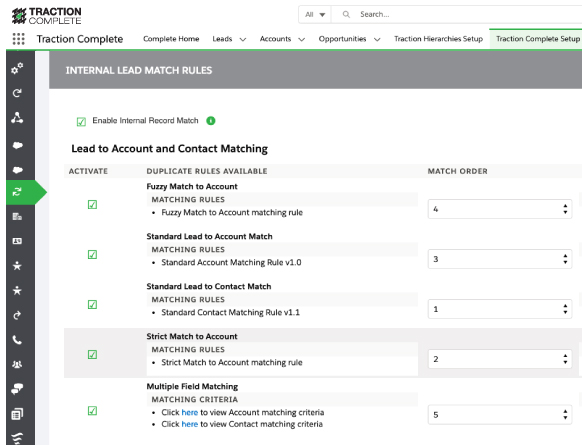
Now that Sales and Marketing have a unified, aligned picture of the customer, you need to consider the other GTM arm, Customer Success.
Map cases to align Customer Success.
Salesforce does a great job of ensuring that cases are associated with accounts. The difference is including these cases in your 360 account hierarchy visibility so that you can see all of your cases across all of your accounts all in one place.
With a clean, connected view of the customer across your GTM teams, all parties can better align on account-based strategies and work together on target accounts. Sales thrive and your revenue machine is fueled.
Before you know it, you’ve got Sales, Marketing, and Customer Success ready to walk the GTM walk. Silos, be gone!
That’s it for the walk. Here’s your checklist to align your GTM team:
- Give Sales visibility into leads and cases (match leads to accounts, map cases)
- Give Marketing and Sales a clean, connected account-based customer view with Complete Hierarchies
- Give Customer Success an understanding of all the interactions that are taking place
Ready to run, read on.
Run – Empower Your Entire Organization with A True 360 Customer View
It’s time to bring your entire organization into the 360 customer view fold, beyond GTM teams.
Only 49% of businesses say they have fully integrated systems. Yet high-performing sales teams are 2.1 times more likely than underperformers to have these systems in place. – Source
The more teams that have the same understanding of the customer, the more cohesive your organization will be and the more your customer experience will improve.
The problem is that finance and operations often use systems and data outside of Salesforce.
Operations use external third-party systems for strategic planning. Finance might use ERP for billing purposes. And so lives on the disconnected data dilemma. But it doesn’t have to be that way.
Let’s look at Vonage, an enterprise telecommunications company with multiple separate selling environments for each of their communications, API, and contact centres.
Unifying a complete customer view meant the daunting task of syncing separate Salesforce environments together.
Each business unit had a different understanding of the customer. And each department across the organization was leveraging unique third-party data systems. The way forward for Vonage was to link account hierarchies with a unique account ID so that they can be synced across siloed systems.
Start with a unique identifier to align data across all departments and link third-party systems together.
A unique ID acts as a single source of truth that gives you the anchor point to map data between disparate systems.
See the example visualization below, where the green numbers (or Unique ID) act as a consistent reference across Salesforce Cloud, SAP, and Snowflake. In reality, this is not how it looks, but you get the idea. No matter how many different naming conventions exist in each system, there’s always a source of truth between them.
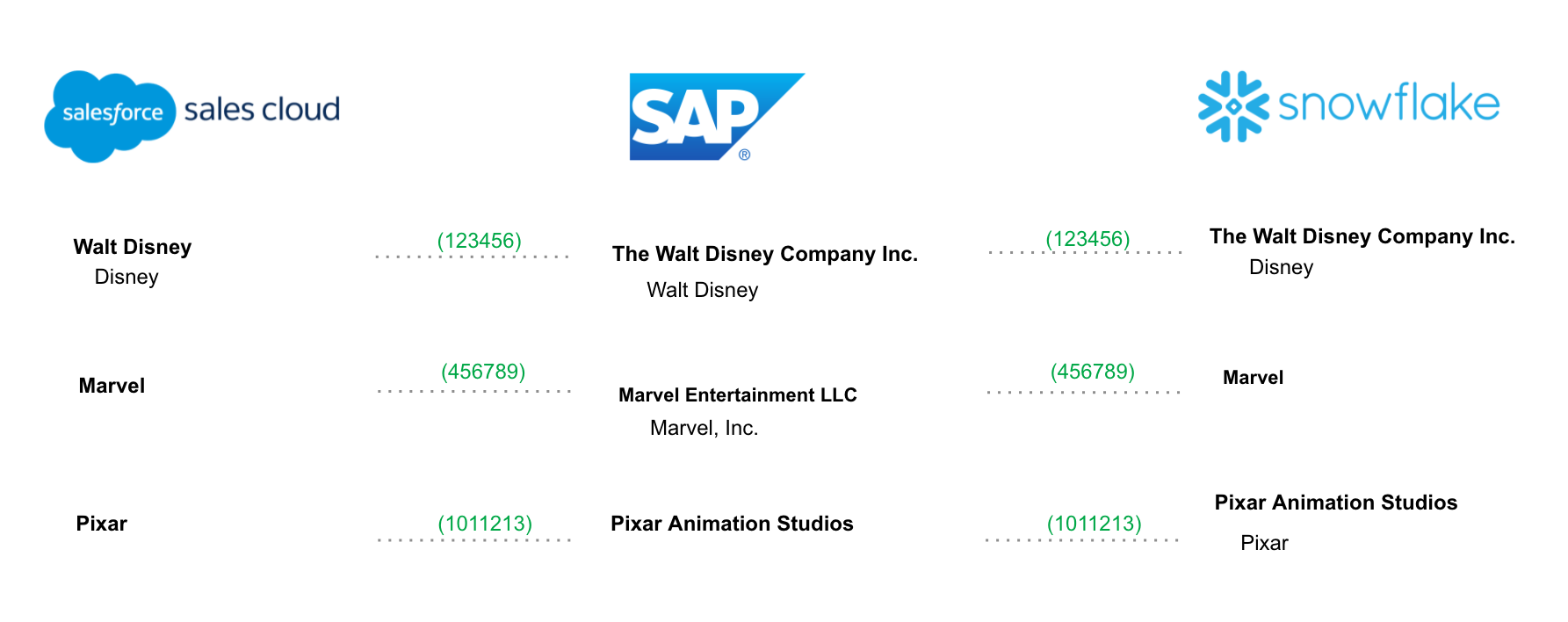
A great starting point is using the DUNS number from Dun and Bradstreet.
But there’s more.
In certain cases, your GTM account hierarchy may be different from the legal understanding.
Berkshire Hathaway, a holding company, might be the legal hierarchy for subsidiary companies GEICO (insurance) and Fruit of the Loom (clothing). However, Sales teams sell into GEICO very differently than they would sell into Fruit of the Loom.
This means different verticals and go-to-market strategies that require different hierarchy views. In those cases, you want to identify your own UID, like a Complete Company ID.
Consider the Unique Identifier as the master key to all your data doors, including multiple Salesforce environments or organizations.
In order to orchestrate data to and from third-party systems and your Salesforce organizations, use an ETL tool like Mulesoft.
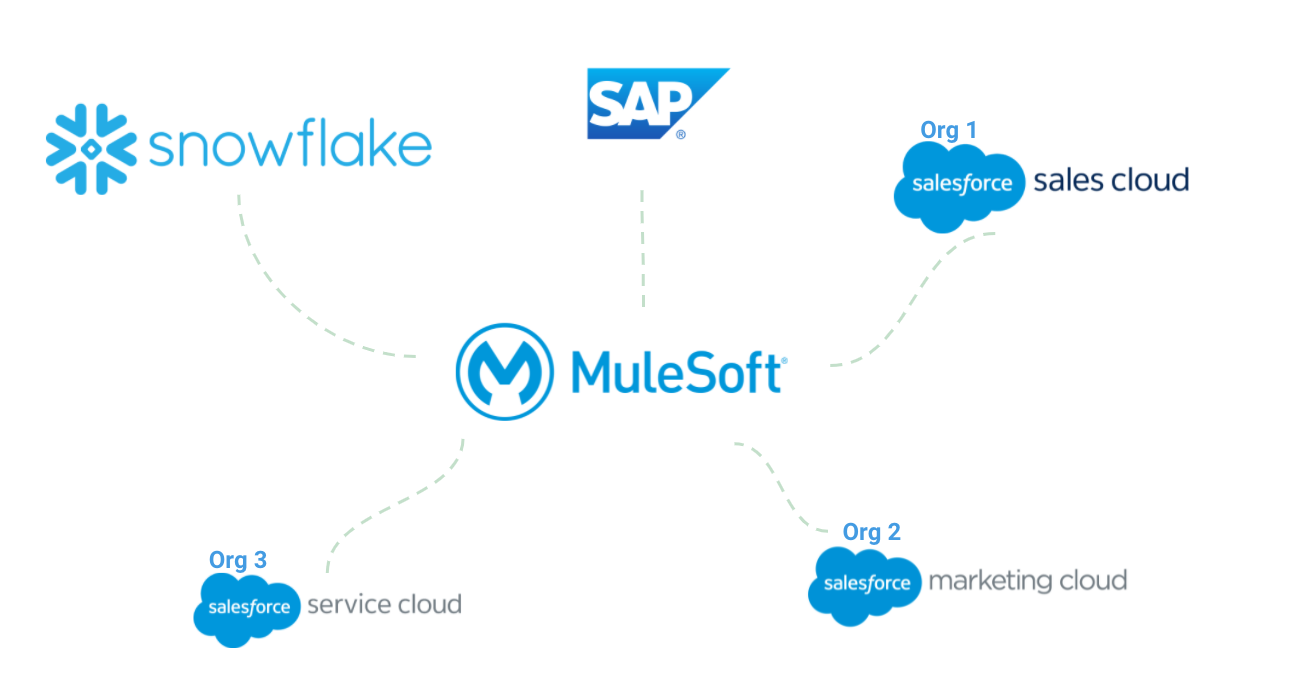
We’re ‘all in’ on Salesforce. But we’re also not lost on the fact that data lives outside of it. By pulling in other data living in silos, you can unlock insights buried in third-party systems and truly realize your selling potential.
There you have it. A high-level walk, crawl and run approach to a true customer 360 view. You’re ready to run!
Here’s your run-ready checklist:
- Align all other departments outside of your GTM team
- Integrate third-party systems
- Use a Unique Identifier
Fuel Your Revenue Engine With Clean, Connected Data
Without a clean, connected 360 degree customer view, you’re leaving dollars on the table.
At the end of the day, the goal is to fuel the revenue engine. What fuels revenue? Connected data, a strong customer experience, and happy, conflict-free sales reps.
Stop wincing when you hear the words “Customer 360 view”, and learn more about how automated account hierarchies and lead to account matching can get you crawling, walking, and running with ease.
Don’t let data hold you back. Build a better way with Complete Hierarchies.
Book a demo with one of our resident data experts, our doors are always open.


